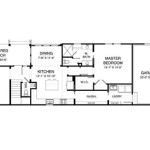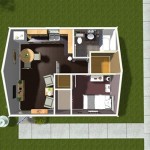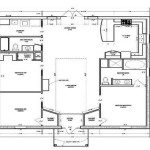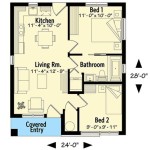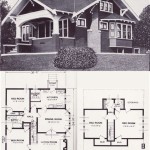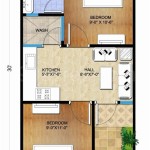One-Story Retirement House Plans: Creating a Comfortable and Accessible Haven
As we navigate the joys and challenges of retirement, it's essential to consider one's living space and how it can support our evolving needs. One-story retirement home plans offer an array of benefits, providing a safe, comfortable, and accessible environment for a fulfilling golden age.
Benefits of One-Story Retirement House Plans
One-story retirement homes eliminate the need for stairs, significantly reducing the risk of falls and enhancing overall mobility. This feature is particularly crucial for individuals with limited physical abilities or those who anticipate future mobility challenges.
Additionally, one-story homes often offer wider doorways and hallways, making it easier to navigate with a wheelchair or walker. The absence of stairs also ensures that all living areas are easily accessible, preventing isolation and promoting social interaction.
Floor Plan Considerations
When designing a one-story retirement home, several essential considerations should be taken into account. The floor plan should prioritize a logical and efficient layout, with rooms flowing seamlessly into one another.
The master bedroom should be conveniently located on the main floor, along with a dedicated bathroom featuring accessible features such as grab bars and a walk-in shower. Other essential rooms, such as the kitchen, dining area, and living room, should also be easily accessible.
Safety and Accessibility Features
Safety and accessibility are paramount in one-story retirement homes. Non-slip flooring, adequate lighting, and well-placed handrails increase mobility and minimize safety hazards. Doors should be easy to open and close, with wider thresholds for wheelchair accessibility.
Consider installing smart home technology to enhance convenience and safety. Features such as voice-activated lighting, automated door locks, and emergency response systems provide peace of mind and support independence.
Outdoor Living Space
Outdoor living space is crucial for physical and mental well-being. A well-planned patio or deck allows for relaxation, gardening, or socializing with loved ones. Ensure that outdoor areas are accessible and include seating options that provide support and comfort.
Energy Efficiency
As retirement budgets become a concern, energy efficiency should be a top priority. One-story homes have a smaller footprint than multi-story homes, resulting in lower heating and cooling costs. In addition, consider energy-efficient appliances, windows, and insulation to further reduce utility bills.
Customization and Personalization
Retirement home plans should be tailored to individual needs and preferences. Work closely with an architect to create a home that reflects your lifestyle and aesthetics. Consider customization options such as extended patios, accessible bathrooms, or specialized home offices to enhance comfort and functionality.
One-story retirement house plans provide a foundation for a fulfilling and enjoyable golden age. By prioritizing accessibility, safety, and comfort, these homes foster independence, promote well-being, and create a haven that supports the evolving needs of retirees.

Small One Story 2 Bedroom Retirement House Plans Houseplans Blog Com

Small One Story 2 Bedroom Retirement House Plans Houseplans Blog Com

Small One Story 2 Bedroom Retirement House Plans Houseplans Blog Com

Small One Story 2 Bedroom Retirement House Plans Houseplans Blog Com

Small One Story 2 Bedroom Retirement House Plans Houseplans Blog Com

Small One Story 2 Bedroom Retirement House Plans Craftsman Style Cottage

Small One Story 2 Bedroom Retirement House Plans Houseplans Blog Com

Starter Or Retirement Home Plan 83098dc Architectural Designs House Plans

Small One Story 2 Bedroom Retirement House Plans Houseplans Blog Com

Retired Couple Finds Floor Plan Forever Home The House Designers

